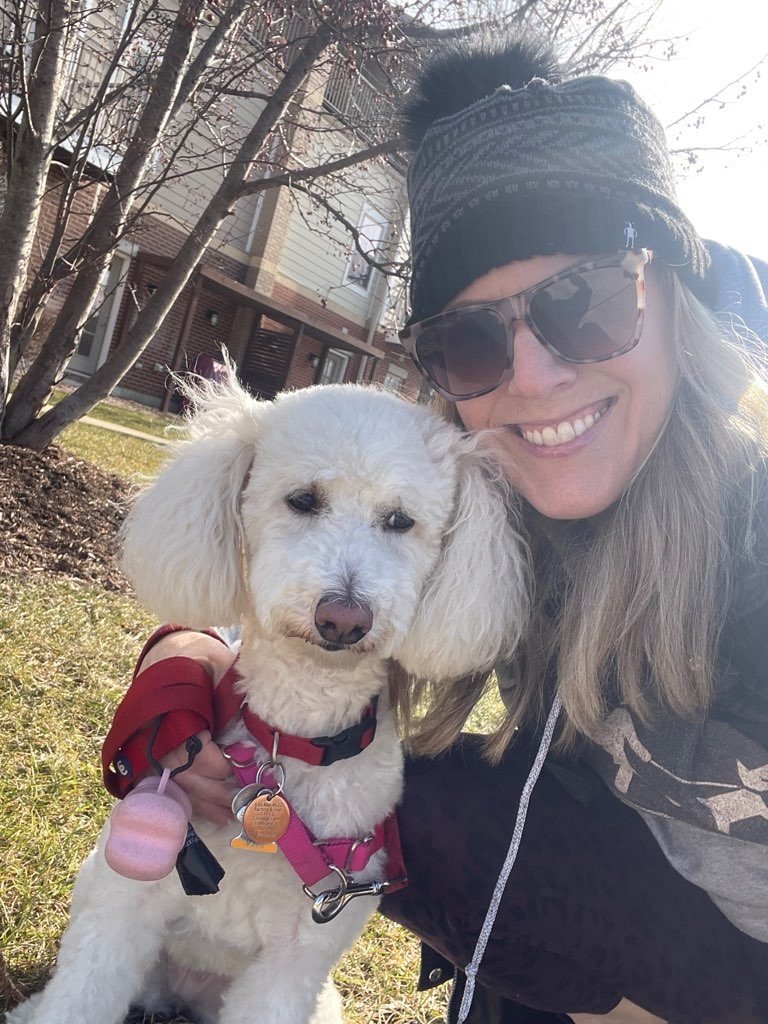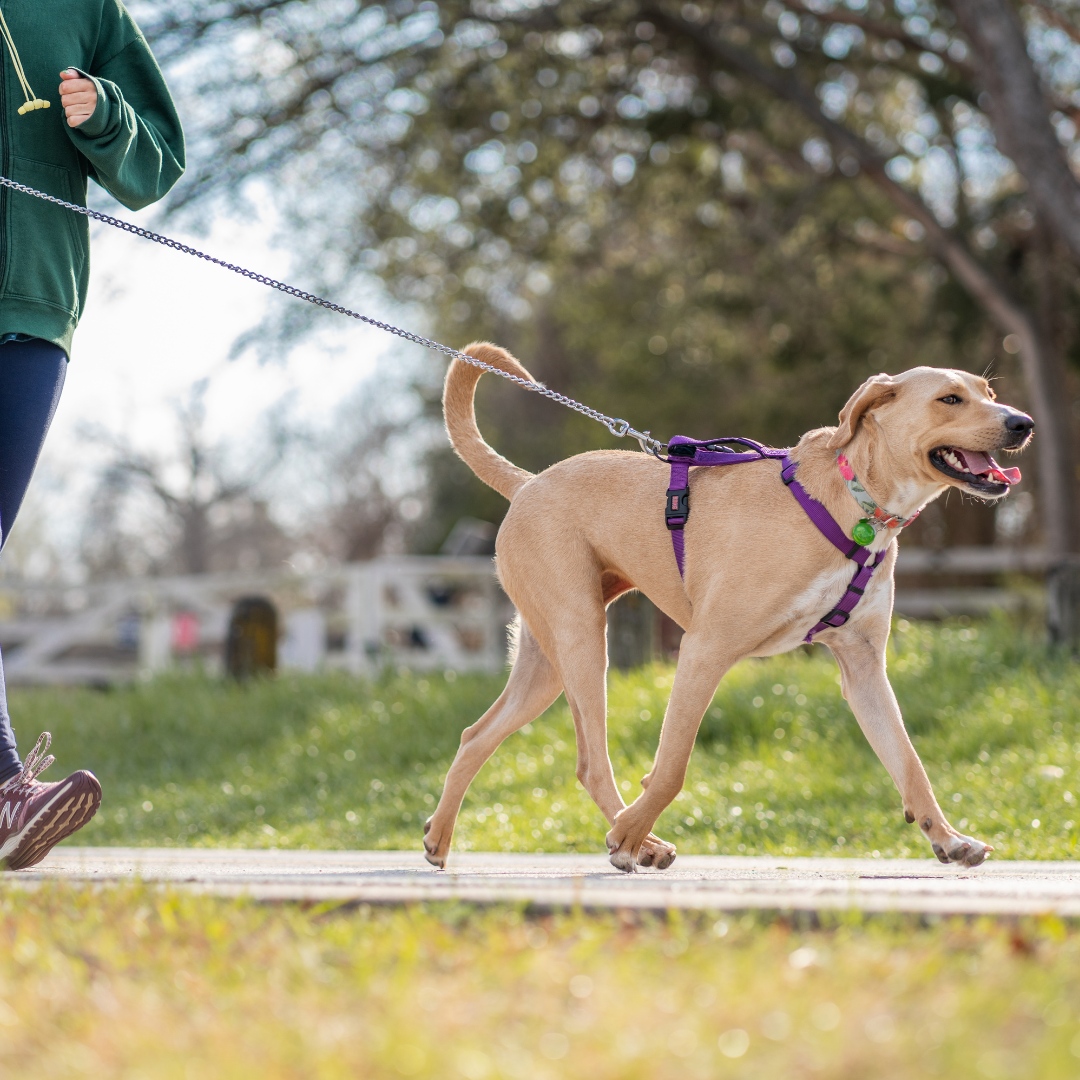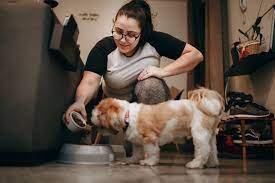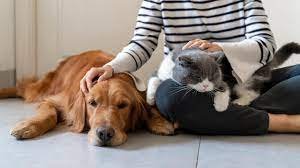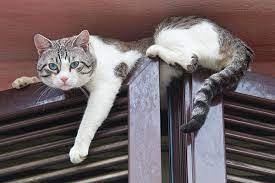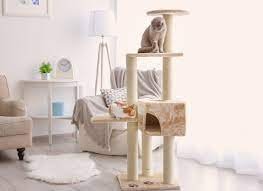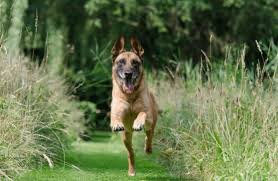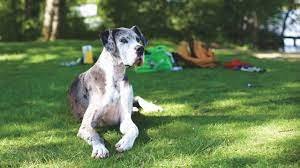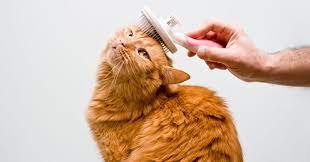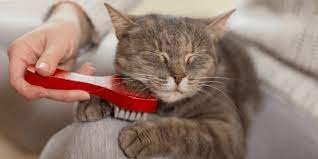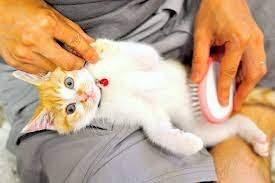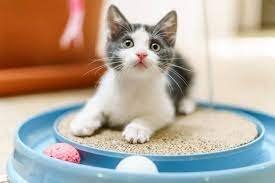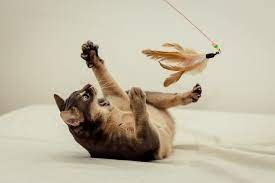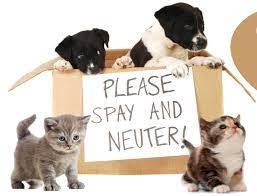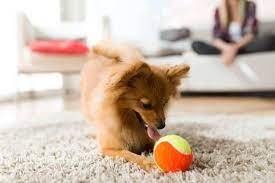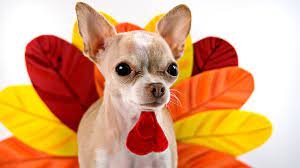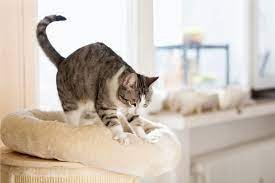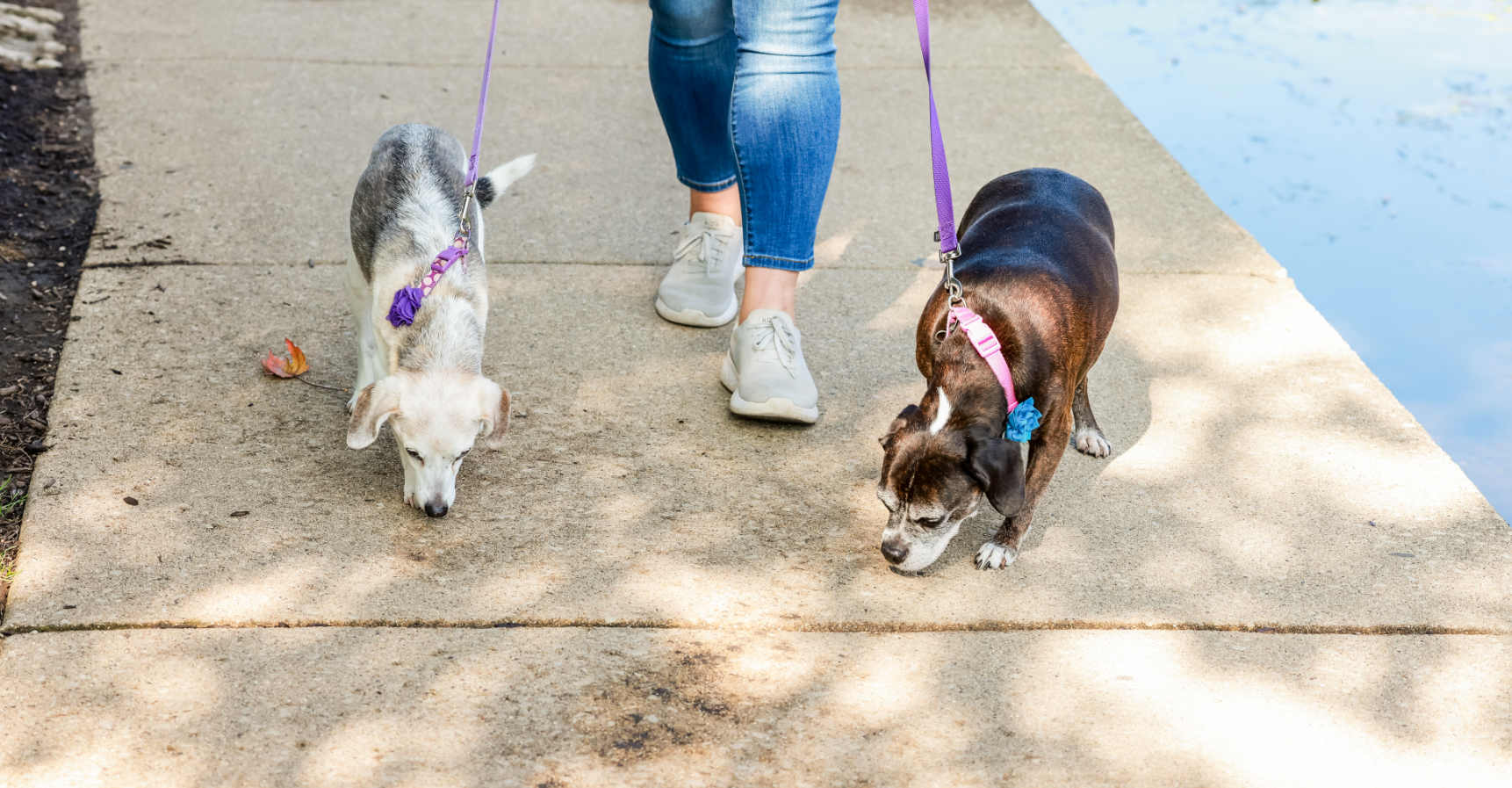
Blog
Asking For A Fur-Friend
Pet Friendly Spring Break Destinations 2025
While some people like to travel without their pets, there are just as many who tailor their trips to include the four legged members of their family. Spring break typically is the first sign of warmer weather, at least in the midwest United States, and can be a perfect time to get out and go with the whole family.
While some people like to travel without their pets, there are just as many who tailor their trips to include the four legged members of their family. Spring break typically is the first sign of warmer weather, at least in the midwest United States, and can be a perfect time to get out and go with the whole family.
These vacation destinations are known for spoiling pets and their people. Warning: Your bucket list is about to get a whole lot longer.
Victoria, British Columbia
We will start our journey in Canada. Victoria, British Columbia has amazing off-leash green spaces and pet friendly accommodations that will check all the boxes for your pup. The city has a “Paws in Parks” program which dedicates twelve parks in the city that are dedicated to off-leash activities. Just blocks away from Victoria’s downtown, Dallas Road offers a trail and beach fun for your pup with the backdrop of amazing ocean and mountain views. Local hot spot, Clover Point, is a great place to walk with your four legged best friend. Along the scenic marine drive you can catch views of Mount Baker while your dog navigates the rocky terrain. You may even meet many other four legged friends enjoying the space!
Essex, Vermont
Vermont is a great vacation destination any time of the year. But in spring with all the blooming trees, it is breathtaking. The Essex Resort and Spa is the best spot to stay and pamper your pup. They have a pet-friendly “R & Arf” package that includes an interactive doggy treat cooking class for owners. The ultimate lodging package for guests and their number one travel companions, “R & Arf” features a two-night stay, the cooking class, a two-course room service dinner for two adults and one pet, passes to the 575-acre community park at Indian Brook Reservoir for a self-guided hike, and a keepsake collapsible water bowl and toy.
Shandelee Mountain, New York
The Arnold House is one of the best country escapes for guests and their pets, especially those who enjoy outdoor activities. Specific pet amenities include house-made dog treats, customized dog tags with Arnold House contact information, dog beds and more. There are hundreds of nearby hiking trails, swimming, boating, and fishing activities; humans and four legged guests can explore during the day and return to the inn at night.
Smoky Mountains, Bryson, North Carolina
If you want to visit the smoky mountains, Hidden Creek Cabins has over fifty dog-friendly mountain cabins. Even better, they have no weight limit or dog limit, so it’s perfect for the large family that has trouble finding a place to vacation. You can enjoy all the mountain trails you can squeeze into your vacation, as well as a cozy fire in the evenings.
Telluride, Colorado
This town is truly for the dogs – they have more dogs than people per capita! Visitors can take advantage of all kinds of activities that are dog friendly – from hiking to dog-friendly gondolas to get around town. Dogs are welcome at most of the inns and hotels and on the local shuttle bus, The Galloping Goose. They not only have dog-friendly restaurants, but they have convenient, two-house puppy parking spots located in front of the town’s restaurants and shops.
Sedona, Arizona
If the southwest is more your speed, check out Sedona, Arizona. Sedona is known for its stunning red rocks and outdoor adventures for those on two or four legs. Surrounded by over a million acres of national forest land, Sedona offers endless trails for hiking for all skill levels with dogs allowed on most trails. You have plenty of choices of restaurants with more than a dozen, being pet friendly. The Hilton Sedona Resort & Spa allows dogs up to 75lbs to stay in their two-room suites.
Emerging Destinations For Spring Break 2025
South Padre Island, Texas
South Padre Island is a fantastic pet friendly destination, offering a mix of sandy beaches and outdoor activities. This island features miles of open shoreland where leashed dogs can play, run and splash in the water, one of the popular spots is Isla Banca Park. If your dog is not a beach dog, the Laguna Madre Nature Trail is a beautiful spot to stroll on the boardwalk through costal wetlands.
Wisconsin Dells, Wisconsin
Wisconsin Dells is a great destination for pet parents looking to enjoy outdoor adventures with their pups! The Dells is knows for it’s family friendly atmosphere and provides quick access to Mirror Lake State Park and Devil’s Lake State Park. Both parks welcome leashed dogs and allow visitors to take in the stunning rock formations and forests. Several boat tour companies, including Dells Boat Tours, allow four-legged family members along to join in on the fun.
Louisville, Kentucky
Louisville, Kentucky Is an excellent destination for pet owners looking for a mix of urban attractions and outdoor activities. The city is known for its welcoming attitude towards pets, with numerous parks, restaurants and accommodations that cater to travelers with dogs. One of the top spots is Cherokee Park with scenic trails and an off-leash dog park. If you and your pup want more city life, many restaurants and breweries, such as Garage Bar and Against the Grain Brewery have pet friendly patios.
We hope these ideas spark the desire to travel with your pet; however, we know that is not always the best option. I have to say it - if you are unable to travel with your pet, consider hiring a local professional pet sitter to care for them. If you live in Illinois in Elmhurst, Villa Park, Lombard or Naperville communities, contact us here. We would love to meet your dog!
Why You Should Wash Your Pet’s Bowl
As pet owners, we go to great lengths to ensure our dogs are happy and healthy, from choosing the best food to taking them on regular walks. But one often overlooked aspect of pet care is the cleanliness of their food and water bowls. Regularly washing your dog's bowls is not just a matter of hygiene—it's essential for their overall health. Especially if you have a dog like mine who is not the best at getting all the crumbs and bits at meal time. Here’s why it’s so important to make this a routine part of your pet care.
As pet owners, we go to great lengths to ensure our dogs are happy and healthy, from choosing the best food to taking them on regular walks. But one often overlooked aspect of pet care is the cleanliness of their food and water bowls. Regularly washing your dog's bowls is not just a matter of hygiene—it's essential for their overall health. Especially if you have a dog like mine who is not the best at getting all the crumbs and bits at meal time. Here’s why it’s so important to make this a routine part of your pet care.
Prevents Bacteria
Just like human dishes, your dog’s food and water bowls can harbor bacteria if not cleaned regularly. Residue from dog food, especially wet food, can quickly become a breeding ground for harmful bacteria like Salmonella and E. coli. These bacteria can lead to serious illnesses not only for your dog but also for your family if the bowls are handled without proper hygiene. Regular washing with hot, soapy water helps to eliminate these bacteria, ensuring that your dog’s meals are safe to eat.
Reduces Risk of Mold
Water bowls, in particular, can develop a slimy layer known as biofilm if left uncleaned for too long. Biofilm is a collection of bacteria and fungi that adhere to surfaces in wet environments. Over time, this slime can turn into mold, which poses significant health risks for your dog, including respiratory issues and gastrointestinal problems. To prevent biofilm and mold, it’s crucial to wash your dog’s water bowl daily and thoroughly dry it before refilling.
Supports Dental Health
Clean bowls prevent the buildup of food debris and bacteria that can lead to dental issues like plaque and tartar, contributing to better oral hygiene for your pet. Plus it can help keep your dog’s breath smelling fresher.
Avoid Attracting Pests
Food particles left in unwashed bowls can attract unwanted pests like ants, roaches, or even rodents. These pests can carry diseases and lead to additional health hazards for your dog. By regularly cleaning the bowls, you minimize the risk of attracting pests, keeping your home and your pet’s eating area safe and clean.
Supports Overall Health
Your dog’s immune system can be compromised if they are consistently exposed to bacteria, mold, or other contaminants found in dirty bowls. This can lead to recurring illnesses, digestive issues, or skin conditions. By maintaining clean food and water bowls, you support your dog’s overall health, allowing their immune system to focus on more significant challenges rather than fighting off preventable infections.
How Often Should You Wash the Bowls?
For optimal health, it’s recommended to wash your dog’s food bowl after every meal and the water bowl at least once a day. Use hot water and a pet-safe dish detergent, and make sure to rinse thoroughly to remove any soap residue. If you have multiple pets, each one should have their own set of bowls to prevent cross-contamination.
Washing your dog’s food and water bowls may seem like a small task, but it plays a vital role in maintaining their health and well-being. By incorporating this simple practice into your daily routine, you can prevent a host of potential health problems and ensure that your furry friend stays happy, healthy, and hydrated. So, next time your dog finishes a meal or drink, take a moment to wash their bowls—you’ll both be better off for it!
Ensuring we wash our furry client’s bowls is only one of the things we do at feeding times. If you or your pet is in need of a pet sitter, CLICK HERE to get started! The Pet Lady is your go-to dog walker and pet sitter in the Elmhurst, Villa Park, Lombard and Naperville, IL communities. We would love to meet your pet!
Discover Pet Friendly Elmhurst, Illinois
Welcome, Pet Parents! We know that your furry, scaled and winged friends are more than just pets, they’re family. We are excited to highlight all the pet friendly offerings Elmhurst, Illinois has to offer. Let’s dive into the best spots and services for you and your pets in Elmhurst!
Welcome, Pet Parents! We know that your furry, scaled and winged friends are more than just pets, they’re family. We are excited to highlight all the pet friendly offerings Elmhurst, Illinois has to offer. Let’s dive into the best spots and services for you and your pets in Elmhurst!
Parks and Trails
Elmhurst is already a beautiful place to walk your dogs, but their parks add so much more! Berens Park hosts a wonderful path to walk your dog along with open fields to explore on leash. In south Elmhurst, Eldridge Park is a must for you and your dog! Leashed walks and exploring time is fun at this park and the trail around the park leads into Salt Creek Greenway Trail, lined with wild flowers and trees. This is a great quieter place to enjoy walks with your dog.
For an off-leash experience, the Elmhurst Dog Park located in south Elmhurst is a must for a fun day out! Opening in 2024, this park will feature areas for both small and large dogs, a splash pad and so much more for you and your dog to explore.
Pet Friendly Dining and Shopping
For a day out with your dog, stop by Pints in downtown Elmhurst to dine on their patio with your furry friend. From sandwiches, salads to burgers you will be able to find something on the menu for everyone!
After dinner, swing by Ruff Life for a treat for your pup! Ruff Life offers nutritious food, treats and so much more for your pets! Their staff is knowledgeable and they have adorable cakes, toys and collars. Your pup will have no problem spending your money 🙂
Veterinary Care
Your pet’s health is a top priority, and you can find top-notch veterinary care in Elmhurst. Devries Animal Hospital on Spring Rd. offers full service veterinary care for your pets. They provide comprehensive care including routine check ups, emergency care and specialized treatments.
Grooming and Pet Services
For a day at the spa, your pup will love Paws Grooming. Located just north of downtown Elmhurst, Paws offers a one stop shop for all your pet grooming needs. They are always flexible for last minute nail trims, for bathing or stylized grooming they do require appointments. Their caring team ensures your pets are comfortable and well cared for while at the spa!
For all your pet care needs, The Pet Lady, Ltd is your one-stop-shop! We offer Dog Walks on a schedule or on-demand and pet sitting services for Dogs, Cats and Small Animals. Our caring, professional staff always give pet parents peace of mind while they are away knowing their pets are well taken care of.
Elmhurst, IL really is a welcoming community for both you and your pets. With ample amenities and activities, it is a great place for pet parents to call home! We hope you are able to discover all the pet-friendly spots in Elmhurst with your best friend.
If you or your pets are in need of dog walks or pet sitting services, contact The Pet Lady HERE to get started. We would love to meet your pet!
Exploring Pet Friendly Lombard, IL
Lombard, IL, the Lilac Village, is not only a great place to live but it is a great place for your pet to live too! If you love your pet, this is probably why you are here! So leash up your pup and grab your kitty backpack and let’s dive into what Lombard has to offer!
Lombard, IL, the Lilac Village, is not only a great place to live but it is a great place for your pet to live too! If you love your pet, this is probably why you are here! So leash up your pup and grab your kitty backpack and let’s dive into what Lombard has to offer!
Dog Parks and Trails
East Branch Forest Preserve that spans Lombard into Glendale Heights is a great place to spend time with your pup! The trails in Lombard offer fun nature scenery and the easy walk makes for fun sniffing and exploring. East Branch Off Leash Dog Park (Located in the Glendale Heights side of the preserve) offers swimming, exploring and fun for you and your pup to enjoy!
If you enjoy walks with your pup in the neighborhood, but with a trail feel, check out the Illinois Prairie Path. Spanning miles through DuPage County, the trail provides ample opportunities for exercise and bonding time. Just remember to keep your pup on a leash and respect other trail users.
Pet Friendly Dining
After a hot day playing and exploring Lombard with your pup, stop by Dairy Queen for a pup cone! Your dog will thank you for a cool treat they can enjoy with you.
For something a bit more substantial, head over to Babcock’s Grove House. This eatery offers a variety of American classics and their outdoor patio is pet friendly! Making it a perfect spot for a relaxed meal for you and your pup.
Community Events
Lombard’s Mutt Strut, which takes place annually, is a fantastic opportunity to dress up your pet and join in on the fun! The parade is a great opportunity to connect with other pet parents in the community.
The Lilic Time celebration includes a variety of events and activities, most of which are pet friendly. Take a stroll through Lilacia Park with your pup and enjoy the beautiful smells and vibrant colors.
Veterinarians and Groomers
Known for their excellent veterinary services, Lombard Veterinary Hospital is the place for your pet to go! Their caring and compassionate staff offers top notch care for your pet. Stop by and check out their new location on south Main Street.
Lil’ Critter Dog Grooming located on Roosevelt road is a great place for pampering your pet. Their friendly staff makes your dog feel like they are getting top notch spa days when there. It is also never an issue to get an appointment according to reviews!
Pet Stores and Services
While out touring the beautiful downtown area Lombard has to offer, stop by Ruff Life with your pup! Check out their selection of nutritious pet food and delicious treats. Plus their staff is always excited to see the pet residents of Lombard.
For all your pet care needs, The Pet Lady, Ltd is your one-stop-shop! We offer Dog Walks on a schedule or on-demand and pet sitting services for Dogs, Cats and Small Animals. Our caring, professional staff always give pet parents peace of mind while they are away knowing their pets are well taken care of.
Whether you are a resident or just visiting Lombard, The Pet Lady guarantees that you and your pets will feel right at home. So pack up your leashes, grab some treats, and come explore Lombard, IL!
If you or your pets are in need of dog walks or pet sitting services, contact The Pet Lady HERE to get started. We would love to meet your pet!
Pet Friendly Villa Park, IL
Hello, Pet Parents! The Pet Lady here, we are thrilled to share the pet friendly gems that make Villa Park, IL a great place for pets and pet parents. So, leash up your pup, scoop up your kitty and let’s dive into the fun that awaits in Villa Park!
Hello, Pet Parents! The Pet Lady here, we are thrilled to share the pet friendly gems that make Villa Park, IL a great place for pets and pet parents. So, leash up your pup, scoop up your kitty and let’s dive into the fun that awaits in Villa Park!
Parks and Trails
The village of Villa Park has plenty of parks that are friendly to on leash dogs. From Lufkin Park on south Ardmore to North Terrace Park on north Westmore there is a lot of green space for your pup to stretch their legs and check out all the smells
One of our favorite trails is the Great Western Trail. This beautiful trail is perfect for long walks, runs or leisurely strolls with your pup! The trail is about 12 miles, it provides plenty of space for you and your pup to enjoy nature. This trail is also a bit less traveled than the Illinois Prairie Path, which also runs through Villa Park. The Illinois Prairie Path is a multi-use path with beautiful natural flora and space for dogs to explore.
Dining and Shopping
After a fun filled day with your pup, head over to Crazy Pour Sports Bar where leashed dogs are welcome on their outdoor patio. You can sit and enjoy a meal and drinks with your dog right by your side! Fuel & Creme along the Prairie Path offers outdoor patios with cool treats and drinks you and your pup can enjoy on a hot summer day.
For a bit of retail therapy, head over to Pet Supplies Plus where your pet is always welcome! This local spot offers everything from pet essentials, nutritious pet food to do-it-yourself grooming stations.
Community Events
One of the best things about Villa Park is a strong sense of community, which extends to our four legged family members as well! The Villa Park Paws on the Path is a great annual event where pet parents and their dogs can participate in a fun run/walk, complete with pet-themed vendors and activities. The annual Villa Park Summerfest brings a fun pet parade to the community and a place for fellow pet owners to meet and enjoy the company of their pets!
Pet Friendly Living
For those considering moving to Villa Park, you will find numerous pet friendly housing options. Ovaltine Apartments is a wonderful place you and your pets can call home. From loft style to condo style units, this iconic building understands that pets are family too!
PAWsome Pet Services
Finding reliable pet services in Villa Park is a breeze. Whether you are looking for a caring vet, reliable pet care or grooming services, this town has it all! DuPage Animal Hospital offers compassionate care for your pets, ensuring they stay happy and healthy. Their team of dedicated veterinarians and technicians provide everything from routine check-ups to emergency services.
For those days your pup needs some pampering, check out Villa Bark Grooming Inc. We love a good pun… Villa Park, Villa Bark! They offer full service dog grooming and styling services, located just off the Prairie Path makes for a great spot for your pup!
For all your pet care needs, The Pet Lady, Ltd is your one-stop-shop! We offer Dog Walks on a schedule or on-demand and pet sitting services for Dogs, Cats and Small Animals. Our caring, professional staff always give pet parents peace of mind while they are away knowing their pets are well taken care of.
Whether you are a resident or just visiting Villa Park, The Pet Lady guarantees that you and your pets will feel right at home. So pack up your leashes, grab some treats, and come explore Villa Park, IL!
If you or your pets are in need of dog walks or pet sitting services, contact The Pet Lady HERE to get started. We would love to meet your pet!
Dogs and Kids: Cuteness Overload!
Your baby is crawling on the floor and starts splashing in the dog’s water bowl. Your dog looks at the baby and then at you. Everyone smiles and laughs. Some may take videos and post to social media. But, what’s really going on with your canine companion? How does he feel?
Your baby is crawling on the floor and starts splashing in the dog’s water bowl. Your dog looks at the baby and then at you. Everyone smiles and laughs. Some may take videos and post to social media. But, what’s really going on with your canine companion? How does he feel?
Most people look at this scenario and think “Oh how cute!” The problem is that they are missing the dog’s cue’s. A baby plays with a dog’s water bowl and the dog’s ears pin back, she hangs her head, and is looking to mom as if to say “Are you going to take care of this?” (clear signs of stress).
Both children and dogs look to us as parents and expect us to handle things. If situations like this continue the dog may take it upon himself to correct the child. And how do dogs correct? Through measured bites. Something that isn’t going to cause damage to another dog, but as humans, and babies in particular, will cause injury as we are not as sturdy as them.
As parents and pet parents we should be managing these situations. We keep the baby and the dog separate and monitor any short interactions. Dogs naturally expect other dogs to give their litter space and as humans we should teach the same. Eventually, and gradually allowing for slow, controlled, and observed greetings.
Teaching our dogs to give children space, as a general rule of training, but also teaching our children how to approach and interact with our dog. By employing this approach you’re making both your child and dog feel better. They understand that mom and dad will handle things and all is well.
As our children get older, we should be educating them on how to properly spend time with our dog. As a trainer I’ve seen too many instances where a parent finds it funny that their child will go up to their dog, get in their face, pull on their ears, or be rough with them in general. This could cause a dog to lash out. Often people see the dog as being a problem or aggressive. But, when you review the situation it may just be that the dog was responding like a canine would instinctually as there was no intervention by mom and/or dad.
This isn’t to say that there aren’t instances when a dog will respond inappropriately and that’s a different story. However, I believe as people we neglect to see things from our dog’s perspective and don’t consider how they communicate.
Littermate Syndrome
This may be something you are not familiar with, as was my case. I actually heard this term mentioned on another podcast and had to look it up. Littermate syndrome can occur when two puppies adopted from the same litter grow up together in the same home. In some cases, these sibling puppies will form such a deep bond with each other that they fail to properly socialize with people and other dogs.
This may be something you are not familiar with, as was my case. I actually heard this term mentioned on another podcast and had to look it up. Littermate syndrome can occur when two puppies adopted from the same litter grow up together in the same home. In some cases, these sibling puppies will form such a deep bond with each other that they fail to properly socialize with people and other dogs.
Two dogs can be twice the fun for us! But when those puppies are adopted together from the same litter, problems such as littermate syndrome can occur. When dogs suffering from this are separated they will exhibit classic signs of separation anxiety. You can learn more about separation anxiety in episode 21. Most experts agree that pet parents should get one puppy at a time and wait a year or two between bringing the dogs into their home. This can be the best way to avoid littermate syndrome. One of the worst aspects of littermate syndrome is that your pups do not properly bond with you.
Puppies typically are separated from their mothers around eight to twelve weeks. At this time they begin to navigate their independent lives. If siblings are kept together after twelve weeks they may become each other's “security blankets”. As a result, they may miss the crucial phase of social development, resulting in stunted socialization skills and even anxiety when separated.
Littermate syndrome is not a diagnosed disease, and bringing in two puppies from the same litter does not guarantee they will develop this, but it does increase the chances of poor socialization. The most common symptoms are:
Extreme Codependency: When two puppies experience littermate syndrome they become so dependent on each other for security that they resist anything outside of their comfort zone. This includes other people, dogs, locations or activities.
Separation Anxiety: The result of codependence can be anxiety that occurs whenever the two puppies are physically separated. They can become so overwhelmed that they have a meltdown.
Fearfulness: When two puppies are codependent, they fail to interact with people, dogs and things around them. They may not develop the confidence that forms from learning and exploring their surroundings. Because of this, they develop a fear of anything new.
Poor Social Skills: Just because two pups are social with each other, does not mean they are good with socializing with anyone else. Puppies need the opportunity to interact with other dogs and humans during the formative stage that develops good social skills. When dogs are experiencing littermate syndrome they just rely on each other, and there is a possibility that they may not have equal status - one may be more dominant - which can lead to aggression.
Aggression: While not always present, aggression can arise when one pup is more dominant than the other. The bullying by the dominant sibling can become more intense as the dogs grow.
Littermate syndrome does not go away on its own. The behavioral issues that arise from the puppies being raised together can be addressed however. It may take a lot of effort, but you can help your dogs to achieve proper socialization skills and good behavior. If you have already adopted littermates, please note that there is no guarantee they will develop littermate syndrome. But you should be helping each individual pup be comfortable without their sibling. Take puppies on individual walks, take them to separate training classes and have them crate trained separately. Overcoming the behavioral issues associated with littermate syndrome is a huge task. If you want your dogs to become confident when separated from each other and disciplined when they are, be prepared to invest significant time, but it will be worth it. I promise!
Tips for Running With Your Dog
Running with your dog is a fun way to spend time together and helps keep both you and your pup in shape. Canine fitness is an important part of their overall health. Plus, having a cute furry running buddy can be that extra motivation you may need. Before diving into running with your dog, there are some things you need to consider.
Running with your dog is a fun way to spend time together and helps keep both you and your pup in shape. Canine fitness is an important part of their overall health. Plus, having a cute furry running buddy can be that extra motivation you may need. Before diving into running with your dog, there are some things you need to consider.
Before embarking (oh, pun!) on your running journey with your dog, make sure your dog's breed is one that is suited for running. Some dogs, such as brachycephalic dogs, dogs with short snouts, are not meant to be running buddies. Another important thing to consider is your pup's age. Puppies and dogs under one to one and a half years should not be doing long distances. The rule of thumb is to allow your dog to be fully grown to avoid any injury or stress to their growing skeleton. Even if you have a breed who is good at running such as a Vizsla, Dalmatian or even a Terrier or Sheltie, you still need to know that each dog is different and some may decide they do not enjoy running distances. The last major thing to consider would be the health of your dog, certain breeds are known for hip dysplasia and it is always a good idea to get your pup checked by their veterinarian and make sure they are cleared for vigorous exercise.
Before your dog gets into running, your dog must be loose-leash trained. A canine companion who pulls on a leash when walking is annoying, but dangerous if you are running. The outdoors are a fun place with lots of distractions and smells for your pup, but they need to be able to ignore those stimuli and focus on walking with you before beginning to run. Always use positive reinforcement when training your dog; praise, treats and toys can be great rewards for your dog.
Now that your dog is walking nicely by your side on a loose-leash, it is time to begin slowly building your dog’s endurance. Just as humans need to build endurance and strength, so do our dogs. Start by adding small stretches of running into your walks. On each walk, you want to increase the time or distance you spend running and decrease the time spent walking. After several weeks your dog will be in tip-top shape and adapted to running long distances. Running with your dog requires a lot of dedication from both of you. Our dogs love rituals so once your runs are in place, your pet will start looking for how they are added into their daily routines. Consider equipping yourself and your pup with items that are for your run only. Get a running harness for your pup and a two to three meter leash with reflectors. If you would like to have a hands free run, there are body straps or cross-body leashes that are safe to use while running.
Dedicated runners will head out for a run despite temperatures, but if you are running with your dog, you do need to consider the weather before heading out. Dogs should really be run between about 15 and 60 degrees Fahrenheit. During the summer consider early morning or late evening runs or find a place with lots of shade and always make sure you have plenty of water for both you and your pup. In colder temperatures or when there is salt on the ground, consider training your dog to run in booties. These keep their paws safe from the cold, but are also great in the summer when the pavement is hot. If the weather is not permissible for a run, give your dog the exercise they need with vigorous indoor play. A game of fetch down a long hallway or up and down a flight of carpeted stairs can be a great way for your dog to get their run indoors.
Dogs are our companions and we want to include them in as much of our lives as possible. It is important to do so safely; running can be a great bonding experience for you and your pup.
If your pup is on a schedule and you are away, consider hiring a professional pet sitter to visit and give your pup a good walk and some of the exercise they need. If you are located in the Naperville, Elmhurst, Lombard or Villa Park, IL area, call The Pet Lady at 847.802.9534 or contact us here.
Tips for Conducting a Pet Sitter Interview
Just as much as you are interviewing a potential pet sitter, they are interviewing you as well. You always want to make sure to thoroughly vet your pet sitter and make sure they will be a good fit for your pet and for you. Each pet sitter and pet sitting company probably operates a bit differently from each other, as there is no right way to run a pet sitting company, but there are some basics that should be in place when selecting a pet sitter.
Just as much as you are interviewing a potential pet sitter, they are interviewing you as well. You always want to make sure to thoroughly vet your pet sitter and make sure they will be a good fit for your pet and for you. Each pet sitter and pet sitting company probably operates a bit differently from each other, as there is no right way to run a pet sitting company, but there are some basics that should be in place when selecting a pet sitter.
There is no one size fits all for pet sitters, as some specialize in just cats or just dogs, or even provide care to exotic pets and livestock. With the boom of on demand pet sitters through apps like Wag and Rover, you will need to be more prudent than ever in your search to find a reliable pet sitter. You must set aside time and realize that it may take time and even a few phone interviews until you find someone or a company who would be a good fit.
Before leaving your pet in the care of a pet sitter or dog walker there should always be an initial meeting, called a ‘meet and greet’ or ‘consultation’. This is as much an opportunity for you to interview the potential pet sitter as well as an opportunity for them to interview you and your pets. This also gives the pet sitter a chance to meet your pets in their home and interact with them. There are many times I arrive at a meet and greet and I hear ‘Wow, Fifi is connecting with you more than the other person we interviewed’. For me this is a good sign, not only does it indicate to me that the dog is a good fit, but the owner is too. They are taking the time and putting in the effort to find the right fit for Fifi. While The Pet Lady provides a free meet and greet for all potential clients, it is not uncommon for a company or person to charge for a meet and greet or consultation.
We will discuss a few important questions you should be asking your potential pet sitter or dog walker next, but please note that Pet Sitters International has a great free download checklist of the top seven questions you should be asking your pet sitter in an interview on their website, www.petsit.com.
The first one I will touch on is a combination of two of PSI’s most important questions to ask. Licensing, insurance and bonding. Sounds fun, right? Well, it is important to ask these questions, fun or not, as you need to know if you, your pet, or the pet sitter is covered in an emergency. Things happen and we need to be PUPared for them. Also, certain states, cities and jurisdictions require different business documents, so you should familiarize yourself with what may be required in your area.
The second one I will touch on is can the person or company provide references. For example, The Pet Lady asks our clients for feedback on Google, there many companies will get reviews and these are viewable to the public. If there is a negative review, how does the person or company handle the situation? Beyond that, can the person or company provide current clients who can provide references.
Another thing I get asked a lot: is there a contract we need to sign. The Pet Lady does have all clients sign a service contract. This lays out what the duties of the company are in terms of care of pets and the client's home as well as what the expectation of the client is. This is an important thing to ask, so the person or company can provide you with all details. For example, if you want your pet sitter to arrive at dinner time to feed Fluffy, for one company that may be 4pm and another may be 6pm. Contracts and service agreements lay out the time frames for those services. The Pet Lady provides our dinner visits between 4pm and 530pm.
A great thing to bring up in your pet sitter interview is if the person or pet sitter has any specialized training or is a member of an educational association. I am a Certified Professional Pet Sitter, this means I have taken the time to learn and study all aspects of the industry from the business side to the pet side and have completed a course and test. This also means I am committed to continued education to keep my certificate active. This is a great way to learn more about your pet sitter and their passions within the industry. Hiring a pet sitter who is a member of an organization such as Pet Sitters International or the National Association of Professional Pet Sitters demonstrates the pet sitter’s commitment to the job and industry at large. These professional organizations provide educational resources and business tools to help their members provide the best possible services to pets and their owners.
Other considerations to take into account would be things like how much notice the sitter needs in order to schedule a service request from you. Some sitters will take last minute bookings, while others require a specific notice. Does the pet sitter have office hours and when will emails, texts and messages be answered? Most sitters and companies, while they work long hours, only are available to answer questions during specific hours of the day.
One of the most important things I mention to all clients are our emergency policies and this is something I highly recommend you ask your potential pet sitter. What if they are sick or their car breaks down? What if your pet needs medical attention? Or depending on the area you live in, what if a natural disaster occurs? While each sitter and pet sitting company is different, they should all have policies in place for if emergencies happen. The Pet Lady employs staff who pride themselves on working as a team when emergencies arise.
While a lot of these questions can sometimes be answered on the sitter's or company's website, it is good to review these things during your interview. The potential pet sitter will have questions for you regarding care of your pets and your home as well. According to PSI “When you engage the services of a professional pet sitter, [...] make sure all your questions are answered to your satisfaction. This ensures that you can leave your beloved pets with the peace of mind knowing that they will be well cared for. That’s a win-win-win situation for you, your pets and your pet sitter.
If you are in need of pet care, consider hiring a professional pet sitter in your area. If you are located in Naperville, Elmhurst, Villa Park or Lombard, IL, we would love to meet your furry friends! You can contact The Pet Lady here or call 847.802.9534
Why Do Cats Like to Sleep up High?
We all know cats can be fussy creatures and this attitude extends to their sleeping habits as well. Many owners have gone out and bought plush, expensive beds only for their pampered cats to refuse to sleep on them. Are they just being fussy or is there an ulterior motive for this behavior?
We all know cats can be fussy creatures and this attitude extends to their sleeping habits as well. Many owners have gone out and bought plush, expensive beds only for their pampered cats to refuse to sleep on them. Are they just being fussy or is there an ulterior motive for this behavior?
Whether it’s the top of the refrigerator, a cat perch, the highest shelf on a bookcase, or the top of the cushions on the couch most cats enjoy being in high places and cherish those elevated locations. Your cat may feel more comfortable in the upper half of the room where they can keep an eye on the world around and below them with greater confidence. Instinct plays a huge role in determining feline habits and most cats prefer to sleep and hang out in places with good vantage points. This comes from their instinct to protect themselves and being up high gives cats the advantage of spotting potential dangers. Much of this comes from their ancestors since early cats were hunters that lived in the wild, and their ability to climb meant they had somewhere to retreat to away from larger predators in addition to giving them the ability to hunt for their prey high in the branches. Since this instinct has been passed down, this is why climbing and being up high is natural for our cats.
Cats may also prefer small, enclosed places, especially when sleeping. This also comes from their instinct to feel protected. Many cats, including my own, love to sleep in boxes that are enclosed on all sides. My cats even love it when I close the top, they can still get out, but they get some peace and quiet.
Once your cat finds the perfect place to sleep, they may be happy there for a bit. But do not be surprised if after a few months your cat switches places. The reason for this is only speculation, but experts think that it is driven by the fact that cats are notoriously clean animals; they dislike dust, dirt and even saturated smells. So if the area in which they were sleeping becomes too dirty or the scent changes, they will probably begin their hunt for their new favorite spot.
Let’s dive into details on some of the reasons our cats love elevated perches.
More Visual Warning Time for Your Cat
When your cat is perched high they can easily see more of their environment. The ability to see an opponent or predator entering the area can provide your cat with enough time to plan their escape, remain quiet and hidden, prepare an attack or determine the threat level of the approaching animal or human.
A Way for a Cat to Display Status
In a multicat environment, a higher ranking cat may choose the highest elevated location to display their position within a grouping. When there is tension between cats, the higher ranking cat may assume an elevated position to show status which can thwart off a cat fight.
Out of Reach
If you have a household with cats along with dogs or children, the ability for your cat to retreat to a high perch is the best way for them to be left alone. They may find a place where people and dogs cannot reach them and they can nap in peace.
Exercise and Playtime
If you have a cat tree that has multiple perches, this allows your cat the benefit of being able to climb, jump, and play on the structure. This can be even more true for an indoor cat. Placing a cat tree near a window is the perfect spot for your cat to keep an eye on prey activity happening outside. Even though they won't be able to get to the prey, it becomes a form of cat TV for your feline friend.
Warmth
Even warm and cozy beds can become a chilly place for our cats if placed on the floor. The floor can be drafty and chilly for your feline friend. Perches and beds located on top of cat trees or elevated off the floor are farther from the draft and closer to the rising warm air.
Choosing the Right Perch or Tree for Your Cat
While cat-specific furniture is becoming more and more popular, most of those are made to please the human eye and are less likely to take felines into account in the design. Perches need to be large enough for your kitty to sit on without having their back end or a leg hanging off. If your cat cannot fit on their perch or tree, they may feel it’s a vulnerable spot and may not enjoy being in that spot. Trees and perches that are “U” shaped or have a lip are great since your cat can lean against it. This can give your cat a sense of being protected, having their back up to a wall or ledge. Always take your cat's size and the way they enjoy curling up to nap into account when purchasing trees and perches.
Accommodate Seniors and Mobility Challenged Cats
Your cat should be able to enjoy perches and trees throughout their life. Provide steps for cats who cannot reach perches or other favorite locations. Look for cat trees with lots of platforms and perches so your cat can use them as steps to reach their favorite position on the tree.
Cats sleep a lot. Most cats will sleep up to sixteen hours a day, so make sure they have somewhere cozy and a place they feel safe to relax and nap.
If you are looking for care for your cats while you are away, consider hiring a professional pet sitter. If you are located in the Naperville, Elmhurst, Villa Park or Lombard, IL communities give The Pet Lady a call at 847.802.9534.
How to Help Your Pet in Their Senior Years
Just like humans, senior pets need extra care as they grow old. As an owner, it is important to be mindful of all the ways you can help to maximize your pet’s quality of life in their golden years.
Just like humans, senior pets need extra care as they grow old. As an owner, it is important to be mindful of all the ways you can help to maximize your pet’s quality of life in their golden years.
It’s not always easy to see our beloved pets enter their senior years, but understanding their needs can help keep them happy and healthy. Better care means dogs and cats are living longer now than they ever have before, and as pets get older, they need extra attention and care. It is important to remember age is not a disease. Although senior pets might develop age related problems, you can still help your pet live a happy and healthy life.
When does a pet become a senior?
The short answer is, it varies. Cats are generally considered to be a senior after 10 years old. Dog’s do not have a universal age as the age your pup becomes a senior varies based on size and breed. Large breed dogs tend to have a shorter lifespan than smaller breeds. Experts suggest that dogs become seniors when they are in the last 25 percent of the estimated lifespan for their breed. According to the American Kennel Club or AKC, this translates in to the following ages:
Small or Toy Breeds (less than 20 pounds): 10 - 15 years
Medium Breeds (20 - 50 pounds): 10 - 13 years
Large Breeds (50 - 90 pounds): 10 - 12 years
Giant Breeds (more than 90 pounds): 8 - 10 years
No matter how well cared for, senior pets are vulnerable to age related issues. This means they may require a bit more attention than younger pets, including more frequent vet visits, changes to their diet and even their home.
Here are some basic considerations when caring for senior pets:
Increased Veterinary Care: Senior pets may need to see the vet a minimum two times per year so signs of illness or other problems can be detected and treated as early as possible before they become larger problems. Senior pet exams are similar to exams they have when they are younger, but more in depth. Exams may include dental care, bloodwork and checks for age related diseases. Your veterinarian is great to discuss changing patterns your pet may be experiencing that may require attention.
In between vet visits, it is important to check your pet regularly at home. Make sure to check regularly for lumps, bumps or other changes and get them checked out as soon as possible.
Diet and Nutrition: Senior pets often need easily digested foods as well as foods that provide energy levels and ingredients for seniors. These foods may also contain anti-aging ingredients. Senior specific foods have the nutritional needs our aging pets require. Typically you should follow your breed's guidelines of when they hit their senior years and make the switch to senior foods.
Along with the food our pets eat, considering adding supplements to your furry friend's diet can help them stay healthy as they age. Glucosamine supplements are fantastic for your pet's joints and cartilage. If you have a large breed, these supplements may be good to begin before your pet reaches their golden years. Omega 3 fatty acids can help with inflammation as well as cognition. Antioxidants may also be able to help with healthy cognition and memory. It is important to note that not all supplements are created equal and you may need to research what would be best for your pet or consult your veterinarian for recommendations.
Weight Control: Weight gain in senior dogs increases the risk of health problems, whereas weight loss is a bigger concern in senior cats. Excess weight can have major effects on senior pets. Obesity is linked to risk of arthritis, breathing issues, diabetes, heart disease, high blood pressure, skin problems along with many others. An overweight pet may not show early signs of disease which is why regular vet appointments are necessary. On the other hand, rapid or sudden weight loss in a senior pet often means there is something wrong, especially in cats. Hyperthyroidism, cancer, diabetes or kidney disease are some of the common causes. Consult your vet to determine the correct serving size of food for your pet, and if your pet is showing signs of weight gain, consider increasing their exercise to assist them in keeping their weight down.
Maintaining Mobility: Pets can become less active with age. Keeping senior pets active through age appropriate exercise helps them stay healthy and mobile. Adjusting your senior pet's activity to fit their age is a great way to keep them healthy and still get their mental stimulation in. Swapping jogs for walks or hikes, splitting up long walks into shorter ones can be great ways to modify the activities you and your pet enjoy doing together. Consider low impact exercises such as swimming to take the pressure off their joints. No matter what changes to the activities you do with your pet, keeping their routine as they enter their golden years can help them to thrive. As your senior pet's cognition begins to decline it is best to keep the predictability to their day to day life. It is comforting to our pets to keep routines and if changes are needed make those slowly. If your pet is mobility challenged, consider a stroller or other mobility aid for your pet. Using a stroller so your pet can still enjoy being outside on a walk with you is a great time to bond, but also your pet will enjoy the weather and still be able to enjoy the smells that being outdoors brings them.
Mental Health: Senior pets can show signs of senility or cognitive dysfunction. Continuing to have mental stimulating things for your pet to interact with can help keep them mentally active. Food puzzle toys can be a great way to add mental stimulation for your pet along with keeping their activity low impact on their joints. Your dog or cat needs to work to get the tasty treats out of the puzzle or ball by nudging it, spinning wheels or sliding compartments. Play sensory games such as hide and seek with you or with your pet's favorite treat. Continue with training and obedience. Incorporating at least 10 minutes of structured trick and obedience training can help keep them active as well as it being a mentally stimulating activity. Encourage interaction with other dogs and people. If your pet loves the company of people and dogs, do not eliminate those fun activities from their routines.
Environment: Senior pets may need changes in their lifestyle, such as new sleeping areas to avoid stairs, more time indoors, etc. There are many modifications you can make to your home to help keep your senior pet comfortable. Senior pets, especially those with arthritis may begin to find it difficult to use the stairs, or jump on and off furniture. You may need to move their sleeping area to one that avoids steps or installing ramps to assist them with getting on and off couches or beds. Covering slippery areas such as hardwood floors as your pet's mobility decreases, they may find it difficult to hold their balance as slippery floors can be hard to walk on. Covering these spaces with rugs or mats helps provide more grip for your pet. Even something as simple as raising their food and water bowls can help. Raising them up so your pet won’t have to bend down as much to eat can be comforting to your pet.
Grooming: As your pet's mobility decreases, older dogs may not be able to reach all areas of their body as they used to. Set aside regular time to brush your pets and get any tangles and loose fur out before it becomes matted. Your pet may also need baths more frequently. Grooming can be a great time to conduct a once over on your pet to check for lumps and bumps.
It is normal for pets to lose some of their sight and hearing as they age. Senior pets might develop cataracts affecting their vision and they may not respond as well to verbal commands. Pets with poor hearing and sight can still get around well as long as they are familiar with their surroundings. If your pet's eyesight is failing, avoid rearranging furniture or adding furniture to your home that may become obstacles. Since your pet's other senses are strong, your dog can thrive with limited vision. Teaching your pet hand signals at a young age may make it easier for you to communicate with them as their hearing worsens with age. When beginning training, consider adding hand gestures that correspond to the verbal commands you are giving. Please note, even if you teach your pet hand signals, pets with hearing loss can become startled much easier.
Your pet's dental health needs to be taken into consideration at all stages of their life, but especially as they enter their senior years. Tooth disease is incredibly common in senior pets and can cause inflammation, gum infections, bone loss, and there is a risk of plaque and bacteria entering your pet's bloodstream and affecting their organs. Consider brushing your pet's teeth as part of your daily routine and have your veterinarian check their teeth at their exams. Your pet's teeth will also weaken as they age, so you should avoid harder chews, bones and antlers.
Should new pets be brought into a home with a senior pet?
It may be tempting to bring a new pet - especially a puppy or kitten - into your home as your pet gets older. It is always a good idea to introduce a new pet when your current pet still has their vision, hearing and mobility so they can hear and see the new pet coming and they have the ability to move away. Senior pets need to know they have a quiet, secure place to rest undisturbed.
Although the changes your pet faces during their senior years may seem overwhelming, small changes in their food, exercise, environment and care can make a huge difference in their quality of life. Our pets are truly members of our families, offering us love and companionship and we should be offering that back to our pets.
If you have a senior pet who may need to keep a tight schedule, consider hiring a professional pet sitter to visit your pet while you are away. If you are in the Naperville, Elmhurst, Villa Park or Lombard, IL communites, reach out to The Pet Lady here or give us a call 847.802.9534
Exercising A Large Breed Puppy
Bringing a puppy home can be like installing a backup generator on full power - they just have so much energy! We all know that puppies need plenty of mental and physical stimulation, not only for their development, but to keep them from finding destructive behaviors that can be sometimes hard to break.
Bringing a puppy home can be like installing a backup generator on full power - they just have so much energy! We all know that puppies need plenty of mental and physical stimulation, not only for their development, but to keep them from finding destructive behaviors that can be sometimes hard to break. Let’s dive in.
How much puppy exercise is too much for large breeds?
We all know that large breed dogs are prone to joint problems and with this knowledge we need to make sure we are not over exercising our puppies. In spite of their shorter lifespan and quick growth, large dogs take a long time to fully develop. The younger they are, the shorter your exercise time should be. Even if your four month old German Shepard is more than happy to keep up with you on a long hike, you should save that kind of exercise until they are older. Because large breeds do not fully develop until about 15 months, you won’t want to start any activities like agility early. Any strain on underdeveloped joints can lead to bigger problems in the future. You should let your puppy nap when they feel like it. Shorter bursts of exercise will give them the chance to rest when their body tells them it’s time.
Tips for safe large puppy exercise.
There are a few things you can begin to teach your puppy and that you should bear in mind as you learn how much and how often your puppy needs exercise. The first is to teach your pup how to walk on a leash. In the beginning, puppies tend to see leashes as toys and may enjoy trying to nip them on walks. Keep their attention away from the leash and on you by carrying treats and working on skills such as sitting throughout the first several walks. Over time, they will get used to the leash and become better at walking with it. You have to also keep in mind timing and how long you are walking with your puppy. Start with short, slow walks and work your way up to longer walks. Do not begin jogging with your pup until they are least six months old and keep the jogs short until they are at least 15 months old. You also want to be aware of the weather and temperature outside. Keep your puppy walks away from the hottest parts and coldest parts of the day. Puppy pads can be very sensitive so walking on pavement when it is too hot or too cold can cause injury to your pup.
Types of puppy exercise to try.
We have mentioned walking and running, which are great forms of exercise for you and your pup. However, there are plenty of other ways to get your puppy moving and active that will let your puppy play and wear them out without causing stress and strain on their growing bodies.
Playing with toys - We all know that puppies love to chew, tug and tackle. Toys are a great way to hold their attention, expend some energy and even show them what is okay to chew on. Keep in mind that puppies have their baby teeth that will finish growing in about six weeks and they will begin to lose their baby teeth at about three months of age. By six months your pup will have their adult teeth, but until then you should stick to toys that are designed for teething. Fetch is a great way to play with your pup. However, if they decide to sit and chew on their toy and not bring it back they may be telling you they are ready for a break in play. Tug-o-war is also an okay activity for puppies, but you need to be mindful of their puppy teeth. They are going to fall out eventually but that does not mean they should be yanked out prematurely. Let your puppy do the tugging while you sit back and hold the toy firmly in one place. No matter what play you engage your pup in, play should last for no more than ten minutes at a time to give you pup time to rest and recoup.
Obedience training - Learning how to sit and stay may not be high-impact exercise, but it still involves activity and it is great for mental stimulation for your pup. Work on basic commands for no more than ten minutes at a time. Change up the space you use for training as your pup learns more tricks. Move about your home and yard and test their ability to focus despite all the distractions that may arise. Mixing low-impact activities with your pup's more vigorous play can increase the amount of time they are active without doing too much too quickly.
Exercise combined with mental stimulation - While we are quick to assume bad puppy behavior is from having too much energy, it can also arise when our pups are bored and looking for something to do. In addition to physically stimulating activities, we should also be engaging our pups in mental stimulation. Scent games are great to get your puppy moving as well as using their brains. Use treat toys that they are drawn to and hide them around your home or yard and let them sniff out the location. Doing this a few times during the day will keep your pup interested and will wear them out.
How much exercise and how often?
While there is no one size fits all for this question, understanding how much sleep your puppy needs will help you gauge how much play they may require. On average, puppies sleep about 18-20 hours per day. Bigger breeds tend to sleep more than smaller breeds, so do not be surprised if your Great Dane only gives you four to six waking hours per day. Of the hours your puppy is awake, only a fraction of them should be spent on exercise. For puppies six months or younger, plan on two to three high-impact play sessions lasting no more than ten minutes each. Work in one or two mentally stimulating activities into your pup’s day that should also only last about ten minutes each as well. As your puppy gets older, you can gradually increase their play time especially for walks. By the time your pup is about one year old a 30-45 minute walk should be okay for them to take part of.
I hope these ideas help you and your new pup begin to form a wonderful bond and relationship. The best thing to remember is that when a puppy displays bad behavior, consider that they may be bored and need something to keep them occupied to avoid those behaviors.
Why Is Brushing Your Cat Important?
Just as we, as humans, brush our hair, our cat’s hair may need the same attention. There are health benefits for your feline friend by making sure we are keeping up with their grooming. A clean cat is a happy cat, from nail trims to bathing, a little maintenance goes a long way.
Just as we, as humans, brush our hair, our cat’s hair may need the same attention. There are health benefits for your feline friend by making sure we are keeping up with their grooming. A clean cat is a happy cat, from nail trims to bathing, a little maintenance goes a long way.
Brushing your cat not only removes dirt, grease and dead hair from their coat, but it also helps to remove skin flakes and stimulates circulation. Brushing your cat a few times per week will help your cat to keep their healthy glow and soft coat. Regular brushing sessions are especially important and beneficial when your cat gets older and is no longer able to groom themselves.
Brushing your cat comes with a ton of benefits for both you and your cat. This can be a great bonding time for you and your kitty; the time spent together can grow the bond you already have. Please note, not all cats enjoy grooming and if your cat fights you in the process and there is risk of injury to you or your cat, consider taking your cat to a groomer or your veterinarian for grooming.
Fewer hairballs. Hairballs can be a normal part of having a cat. However, they can be super gross to step in and clean up. The more you brush your cat and help them remove excess hair, the less likely you are to find hairballs.
Less shedding. Brushing your cat on a regular basis can reduce the amount of excess hair your cat carries throughout your home.
Flea spotting. Even indoor cats can get fleas so regular brushing can help you spot fleas as soon as possible. I encourage you to make sure all animals in your home are on a veterinarian recommended flea prevention.
Pain-free grooming. If you have an older cat or a cat who suffers from arthritis or mobility issues that may make self-grooming difficult, your help with their grooming I am sure would be welcomed.
Better bonding. If you have more than one cat, you may have noticed that they groom each other. Cats do this as a way to build trust and of course show affection. Like I mentioned earlier, brushing your cat can help build the bond between you and your pet.
So, now that we have discussed the benefits to brushing your cat, let’s talk about equipment. There are many different types of brushes when you walk down the grooming aisle at the pet store. It can be overwhelming if you are unsure of where to begin. For most cats, using a bristle brush or pin brush will work just fine. You can use the pin brushes to work out mats and tangles, while the bristle brush is great for a good brushing that will remove excess hair from your feline friend. For long hair cats, you may need to try a flea comb or moulting comb. These look much more like a human comb with wider teeth. These combs can get into the fur of most fluffy felines. If your cat is sensitive to brushes or just downright does not like them, a grooming mitt is a great alternative.
Now we will dive into some best practices for grooming your kitty. If your cat is not already accustomed to a regular grooming routine, these tips are a great jumping off point to get you and your cat into a routine.
Get comfy. To begin, make sure your cat is comfortable and receptive to being touched. It is always good to give your cat a few pets to make sure they are not ‘in a mood’.
Move slowly. Begin with gentle strokes with the brush or comb. Start brushing the areas where your cat likes to be pet, which is typically on their back, between their ears or under their chin.
Venture farther. As your cat becomes comfortable with the feel of being brushed, you can slowly make your way towards brushing more sensitive areas such as the belly. If your cat decides to bite or attack the brush, move back to a spot your cat is more comfortable with before forcing your cat to a brushing in their ‘no fly zones’.
Reward. Every grooming session should end with a treat or some play. Your cat will begin to associate being brushed with receiving a reward, making it a positive experience for you and your pet.
Grooming neglect can lead to mats that can pull on delicate skin or even make it difficult for your cat to walk. Dense mats on your cat can block air flow to the skin and cause irritations and your cat may chew on the mat due to pain and end up ripping their skin.
If you brush your cat on a regular basis, the daily maintenance should not take very long. Grooming shouldn’t be torture and should not last even 30 minutes. With longhaired cats, brushing a few minutes each day will keep their coat in good condition. For shorthaired cats, brushing a few times a week will suffice.
How Much Exercise Does Your Cat Need?
We know that exercise is crucial for our feline friends to keep them healthy and ensure good muscle and bone health. It can also help with your cat's coordination when they stalk, chase and attack their prey.
We know that exercise is crucial for our feline friends to keep them healthy and ensure good muscle and bone health. It can also help with your cat's coordination when they stalk, chase and attack their prey. Obesity in cats is a problem and engaging in play every day with your cat can help reduce their risk for being overweight. Another reason we need to make sure our cats are getting adequate physical play is that it leads to mental stimulation. Exercise helps avoid depression in humans, as well as in our pets, and studies show about 40% of cats suffer from this due to boredom. We know pets who do not have enough physical and mental stimulation can develop behavioral problems, which can be destructive, such as scratching furniture, chewing or being overly hyperactive.
On average, cats need about 30 minutes of physical activity every day. The amount of exercise required might also change depending on your cat’s age and whether they are indoor-only cats. Naturally, cats are hunters and respond to stimuli quickly. If you have an indoor/outdoor cat, while I do not agree with it, those cats who go outdoors require a different exercise regime than indoor cats do. Cats who venture outdoors have unlimited space to roam, they are more physically active and tend to get enough exercise naturally. Also being outdoors those cats are exposed to stimuli such as bugs and leaves which motivates them to perform stunts and be more active. Indoor cats have limited space and less exposure to natural stimuli unless they are like my cat, Phoebe, who finds spiders in the basement we didn't even know were down there. We need to make sure we are motivating our cats to participate in interactive games. You can do this by using toys like feathers, ropes and balls to keep them healthy. Engaging in play with your cat helps enforce the bond you have with your pet as well.
Whether your cat is older or is a young kitten also determines how much play they should have each day. Adult cats should exercise daily for at least a half an hour to keep their body fit and healthy. It also helps to keep their hunting skills sharp and provides the mental stimulation they need. On the flip side, kittens and young cats can sleep up to 22 hours a day, so they are naturally not as active as adult cats. Even though they are not as active, you should still exercise them daily with their favorite toys.
Fun and Easy Exercises for Indoor Cats
Bathtub Ball. With a dry bathtub, toss a ball inside. Your feline friend will be able to play freely inside the tub. Cats do not get bored easily when there are moving targets involved, so let them bat the ball around; you can join in and roll it for them to chase.
Laser Pointers. As we mentioned, cats love things in motion. You can use a laser pointer to keep your cat moving. To encourage your cat to play, use the laser pointer to move like a mouse or bug may move. Always remember to reward your cat after playing with the laser pointer, as there is not a tangible item they are catching; a treat can make up for it.
Animal Toys. Cats are very observant creatures and can somehow distinguish the physical appearance of real life and fake stimuli. Consider getting your cats toys that resemble real animals like birds, bugs and mice. To make it more exciting, connect a string to the toys and give the toys some life.
Ribbons and Wands. Tie a ribbon or string to the end of a wand and let your cats chase it around the house. These toys are great while you are engaged in play with your cat, but should be put away when the cat is alone to ensure they do not accidently choke on it.
Food Exercise. Mealtimes are very exciting and tempting for cats, especially when wet food is involved. We can help our cats hone their hunting skills by changing up the places where we feed them, or place the wet food in places they may need to climb or hunt for it.
Get Some Cat Towers. Cats love to climb and jump on things, so encourage them to use a cat tree instead of a couch or chair. Multi-tiered cat towers ensure your pet has lots of places to climb and play. To encourage your cat to climb or jump on their tree, place some treats on different levels to help them explore.
Try Catnip. Catnip and catnip toys are useful to help your cat to exercise. Your cat can have fun eating, rolling and being stimulated by the nip, but please note that some cats do not respond to catnip and some may become overly stimulated by it.
Introduce Leash-Walking. Much like training dogs on a leash, you can entice your cat to walk on a leash and harness outdoors. This can be a safe way to introduce your cat to the outside world. It is best to start young and slowly introduce the harness to your cat. Always make sure the harness is secure so your cat cannot wiggle out of it.
Get Your Cat A Pinata. Cats love batting at hanging objects. Putting kibble or treats in the pinata can motivate your cat to bat and play with the pinata. Your cat will be rewarded for their work as the treats drop from the pinata as your cat plays.
Match Exercise Partners. Unlike dogs, your cat may not respond to your requests to play or engage. You can consider adding a second cat as a playmate. They can get along well and engage each other in fun activities like chasing each other, wrestling or even cuddling.
So, overall, most indoor cats do not receive enough playtime and as pet owners, we should take the time to engage with our pets and ensure they get the physical activity they need. Choose games your cat enjoys or get to know which toys are their favorite. Even if 30 minutes does not fit into your schedule, any amount of vigorous play is great for our cats.
When Should You Spay or Neuter Your Dog
In the United States it is common practice to spay and neuter our dogs who are not meant for breeding. Based on the National Pet Owners survey in 2020 78% of dog-owning households have spayed or neutered their dog. Spaying and neutering has become a routine practice due to veterinarians and the animal shelter community working together to reduce the number of unwanted pets who would be euthanized.
In the United States it is common practice to spay and neuter our dogs who are not meant for breeding. Based on the National Pet Owners survey in 2020 78% of dog-owning households have spayed or neutered their dog. Spaying and neutering has become a routine practice due to veterinarians and the animal shelter community working together to reduce the number of unwanted pets who would be euthanized.
Let’s start with the basics. Typically, the spay and neuter take place when the pets are a young age, usually around 6 months. However, as we learn more about our pets and have a larger awareness of their health and safety, this young age may not be the best time for your dog. We know more now about the correlation of our pets sex horomones and their health. Research done at the University of California - Davis, reveals that for some dog breeds, spaying and neutering can cause an increased risk in certain health conditions.
What we do know is that different dog breeds and different sized dogs mature at different ages, so for some an early spay or neuter may not be bad. The wide margin of when each breed matures varies. Toy breed dogs can mature as early as 6 to 9 months while large or giant breeds may mature as late as 16-18 months. So, the large and giant breeds had a higher possibility of risk to future health conditions due to early spaying and neutering.
Like many things, spaying and neutering can have its benefits and its risks. Another reason veterinarians can settle on an early age for this procedure is that if a pet is not going to be bred, spaying a female dog before her first heat cycle has significant benefits in reducing mammary cancers and other cancers of the reproductive organs. For male dogs, the removal of testosterone can have effects on the dog that are decreased or eliminated. Behaviorally, neutered dogs can be less aggressive, less likely to roam in their never ending search for a mate and reduction of humping behavior. Recent studies have linked early spay and neuter to some health risks if done before sexual maturity. However, the two most common ones are urinary incontinence and obesity. No one is quite sure why obesity is seen more in spayed females, however, both these conditions are treatable.
There is no exact time to spay and neuter your dog as we have to take all the differences between breeds, estimated sizes and individual dogs into account. Your primary veterinarian will be able to help guide you through when a good time to spay and neuter your dog would be. If you have a purebred, your breeder can be a great resource to talk about when the best time to spay and neuter will be as well.
10 Ways to Engage Your Dog Indoors
With winter - or at least colder weather coming, it is necessary for us as pet owners to keep our dog physically healthy and active through the cooler months. It can be hard to continue to get creative with different activities for your pup as well as keeping up with doing these activities. Well, keeping your pup active and interested in what they are doing can help remedy some of the challenges.
With winter - or at least colder weather coming, it is necessary for us as pet owners to keep our dog physically healthy and active through the cooler months. It can be hard to continue to get creative with different activities for your pup as well as keeping up with doing these activities. Well, keeping your pup active and interested in what they are doing can help remedy some of the challenges.
So, here are 10 ways to engage your dog indoors.
Hidden Treats
Hiding treats can be synonymous with hide and seek. Treats can be concealed in different places around your home such as under pillows, in baskets, and in multiple rooms in your home. This game can also help keep your pooch’s nose abilities sharp as they hunt for food. This can especially be a fun activity for hunting dogs such as Spaniels, Terriers or Beagles. Along with hiding your pup’s regular treats or kibble, add a high value treat in the mix to ensure your pup remains interested in searching for the hidden treats. It can be a good idea to have a variety of treats of different flavors that your pet will be excited for. The best part about this game is being able to control the hiding spots and even difficulty of the challenge for your pet. Always make sure to switch up hiding spots or your pup will outsmart you and know exactly where the treats will be each time thus eliminating the benefits it has for nose work. You can also increase the difficulty by hiding treats in places your pet may have to work for. For a harder challenge, teach your pet to alert when they have found the treats. Teach them to sit and bark once when they have found the treat. After they do, always reward with head rubs, lots of ‘good dog’ and of course the treats. This can be made more difficult by hiding treats in a closet or behind a closed door and teaching your pup to alert at the door.
Hide and Seek
We touched a bit of this with hidden treats, but joining in on the fun with your dog can help to facilitate a stronger bond between you and your pup. Plus if you have children, this can not only be great bonding for them, but also it can keep your children occupied for some time too! Get your dog to sit and stay, get help from a human if they do not know how to stay yet, then go and hide. After finding your hiding spot, call your dog to come and find you. Always remember when your pup finds you, be very enthusiastic and reward them with praise and lots of head rubs. Also, make sure to change your hiding spots. One of my favorite places is behind a door. My pup smells me, but it increases the difficulty when they have to actually look behind the door and not just in a particular room. If you are excited, your pup will match your excitement. This will also help keep your dog engaged in the play.
Practice Obedience Training
While this should be done daily, getting a few sessions of obedience training or even one in a week is great to keep your pup in tip top shape with their skills as well as added mental stimulation to your dog’s day. Always use positive reinforcement and go over the commands and skills your pet already knows to start. Always switch up the order of the skills you are practicing or you will end up like me and my dog. I always start with ‘sit’ and she then automatically goes into her ‘lay down’ then ‘sit’ again before going into her extended stay stance. It’s cute, but I did not know what I know now, and it is hard to get her to break this routine after 14 years. When working on your pup’s skills, do not spend too much time with it. You do not want your pet to become bored of being asked to do the same thing over and over since this may cause your pet to become disinterested. Once your pet has their basic commands down, try introducing new ones such as ‘high five’ or teach your pet to do nose touches with your hands. Most activities can be adjusted based on your pup’s skill level.
Teach Your Dog A New Trick
Whoever says you can’t teach an old dog new tricks may be wrong. You can definitely teach your dog tricks at any age as long as you keep the dog excited and interested in what you are teaching them. Try teaching your pet to shake, learn the name of their favorite toy or even to army crawl under a chair. The possibilities are endless! One of my favorite tricks is to clean up. You can do this by teaching them what ‘clean up’ or ‘put it away’ means, by getting them to pick up a toy and carry it over to the toy box and drop it. The easiest way is to break it down step by step, slowly adding another step as they master the previous one. You can progress to scattering toys all over and pointing to them, or take it a step further and teach your pup the name of each of their toys. Another fun trick or more of a game is the shell game, or as I learned it growing up, follow the ball. Place a treat under an upside down cup next to a few other cups and move them around, pseudo having your pup follow the cup the treats are under. It is a fun parlor trick when your pup picks the right cup!
Create an Indoor Obstacle Course
If you have enough space, or even if you are able to move a coffee table out of the way in a living room, you can set up an obstacle course for your four legged friend. This can get as elaborate or as simple as you have the space for. Agility can be a great way to exercise your pup physically and mentally and offer enrichment. You can teach your pet the basics of agility by jumping over small boxes, weaving through tables or stacks of books and laying down on a blanket or their bed as the grand finale. This is another activity that is great if you have children. They will have fun building, moving and creating new obstacles for your pup. Kids play tunnels and tents can make for great obstacles as well. Obstacle courses can be tailored to the size of your pup as well. Anything your pup can weave through, jump up on to or over will make this activity fun for everyone.
Tug-of-War
Tug of war can be a great activity, especially if you have a small space. This activity will not make your dog hostile, but it will bring smiles to your face seeing your pet having so much fun with their human family members. This game is simple, but it can really tire your pup out. This is a great way for your dog to get out some extra energy. Always be cautious of things around your home that may be breakable since this game can sometimes get a bit rowdy.
Food Toys
One of the biggest struggles for pet parents who work from home is keeping your dog occupied while you are working. Food toys can be a great way to keep your pet entertained while you work or even while you are binging your favorite TV show. Toys that dispense food are fun and motivating for pups who are food motivated. It is as easy as putting some treats in a toy and walking away. There are toy dispensers that demand the dog push, pull, rotate or dig for their reward. Some toys such as Kongs can keep your pet occupied for a long time. Try freezing a Kong or hollowed out bone with tasty treats; you can even add broth, peanut butter, canned pumpkin or mashed bananas. That will surely make your pup a happy dog and it will last longer when frozen.
Fetching
Fetch does not just have to be an outdoor activity. There are other toys you can use other than balls that your pup can chase after and bring back to you. My dog, Sassy, loves toys that have no stuffing. She will chase and bring them back all day long! Considering a softer toy can also be a good idea when playing fetch indoors; it may save a lamp or two! Hallways are ideal for this game. They tend to be long and can be a place away from breakable objects in your home. Bouncing a ball off the walls of the hallway can also give your pet the excitement of more of a chase too!
Rotate Your Dogs Toys
Dogs love ‘new things’. Just as we get excited about something new, they do too! However, to them something new can be something they have not seen in a while. Rotating toys helps so your pup does not get bored with the toys they have available to them and make the toys that are available seem much more interesting. Stash some of your dog's toys in a cupboard or closet and swap them out with other toys every few weeks. This helps to keep the wow factor and your pet will be so excited for a new toy. They won;’t miss the ones that you now are about to put away. If your pet has a toy they use as a security blanket, do not add that toy into rotation. You do not want to stress your dog out by hiding their favorite soothing toy from them for weeks on end.
Use Pet Training Equipment
Just like humans, pets have their set of training aids. Scientists are starting to learn that training equipment may play a crucial role in a dog’s well-being. Agility tunnels and even treadmills are the most popular dog training pieces of equipment. You need to work with your pup before they are able to use a treadmill for exercise and you must listen to your pet if they don’t progress. If this happens, it may be time to switch gears and find something that your dog will enjoy. Once your pet gets used to training equipment, it can be a great time for your pet! Know that some of these items can be pricey and can take up a lot of space in your home.
If you have a dog, you know when boredom sets in is when your pup is more likely to find themselves getting in trouble. Dogs need a good balance of physical and mental play and stimulation. Playing with your pup may ward off destructive behaviors like excessive barking or finding non-toy items to chew on. Staying indoors does not have to be boring; as we talked about there are many ways to have fun with your pup and keep them engaged. I hope these ideas will give you some inspiration for new ways to play with your pet while indoors!
Thanksgiving With Your Pets
With Thanksgiving right around the corner and it being my favorite holiday - mainly for the food, I thought it would be fun to talk about holiday foods we can share with our four legged friends.
With Thanksgiving right around the corner and it being my favorite holiday - mainly for the food, I thought it would be fun to talk about holiday foods we can share with our four legged friends.
So let's start with the main dish that most of us find at holiday gatherings - Turkey! For those that wonder if dogs can eat turkey at Thanksgiving, the answer is yes. The main dish is okay to offer as long as it has not been prepared with any seasoning. In addition to avoiding bones as discussed, pet parents should skip out on feeding the skin as well. The outer layer of the poultry is likely to have been prepared with butter, spices, or other fatty ingredients that may cause pancreatitis or other issues for your dog.
Let’s dive into the sides, sweet potatoes are a great addition for your pets diet. They are also a great source of dietary fiber, vitamin B6, vitamin C, and beta-carotene. Sweet potato treats can be as simple as a dehydrated sweet potato chew. My dog Sassy just was given some Sweet Taters and she loved them! As did Regina and Phoebe. Just remember not to give your pet sweet potatoes containing any added ingredients such as brown sugar or marshmallows. If your family is like mine and no one can decide on just one type of potato. Your pup gets to enjoy both kinds of potatoes, and your dog can have that option, too. However, give only boiled or baked potatoes with no butter, sour cream, salt, or pepper, and serve in moderation as they are much more starchy than sweet potatoes.
Just like humans, your dogs will love to have a vegetable with their holiday meal as well. Peas are a fine choice, but creamed peas should be avoided. Fattier food items like this that may upset your dog’s stomach. Another great choice are green beans. With ample amounts of plant fiber, manganese, and vitamins C and K, plain green beans are great for dogs. The key here, as with turkey, sweet potatoes and other options mentioned in this list, is the bean dish should be plain — without any added ingredients like butter or spices and that means no green bean casserole for your pet!
Along with your vegetables your pet will be happy with their serving of fruit as well. Apples are full of vitamins A and C and contain lots of great fiber, making them a healthy Thanksgiving treat for your pet. However, if you’re sharing an apple with your pooch, be sure to cut around the core, as large amounts of apple seeds can be toxic.
What better way to wind up a holiday meal than with dessert. Pumpkin itself is a very healthy snack. Pumpkin helps with digestive health and it’s great for a dog’s skin and coat. Also, if feeding canned pumpkin, make sure it’s just pumpkin and not the pre-spiced pie mix. Or think out of the box with some frozen yogurt, not ice cream, but freeze yogurt as a nice treat for your pup. Calcium, protein, and live bacteria in yogurt that can act as probiotics will give your dog a tasty dose of nutrients, and a sweet post-meal treat.
There is also a list of things you should make sure to keep out of your pets reach during holiday dinners.
Turkey bones, skin, and gravy
Stuffing
Casseroles
Mashed potatoes
Creamed peas
Chocolate, cookies, pies, and sweets (especially anything containing xylitol)
Alcoholic beverages
Raisins and grapes
Onions, scallions, and garlic
Ham
Yeast dough
Fatty foods
Foods containing spices
And for good measure, don’t forget to keep the tempting scent of the trash of the special day’s meal out of reach, since we all know our dogs are super smellers.
So put out an extra place setting at the table this holiday season for your furry family member!
Why Do Cats Knead?
If you have a cat, chances are you’ve seen them making a rhythmic and repetitive motion with their paws on things such as pillows, blankets, the couch or even you. This is known as kneading.
If you have a cat, chances are you’ve seen them making a rhythmic and repetitive motion with their paws on things such as pillows, blankets, the couch or even you. This is known as kneading, which some loving refer to as ‘making biscuits’ or ‘making bread’ as the action resembles a person kneading dough. This behavior is completely normal in cats and it is an inborn behavior that kittens carry into their adulthood.
Let’s talk about why our cats knead.
Cats knead to feel comforted.
Newborn kittens gently knead their mother’s belly to help stimulate the flow of milk. This is an instinctual behavior and some cats may even dribble when kneading. As if they are drooling over the expectation of milk. While adult cats do not need to nurse, this is likely associated with comforting feelings. Cats may also purr as they knead showing you they are enjoying the feeling from kneading.
Cats knead to mark their territory.
Cats can be territorial creatures and may knead to help them claim their space. Cats have scent glands on their paws and kneading is a way of them leaving their scent in an area. They transfer their scent on whatever they are kneading and are also letting other cats know it is their space.
Cats knead to make the bed.
While kneading is tied to nursing, there may also be another instinct at play. They may knead on a surface to get comfortable before taking a cat nap - pun intended! The ancestors to the now known house cat, needed to flatten out and pat down resting and sleeping areas to make them more comfortable and detect any unforeseen hazards before sleep. So kneading may be a throwback to that ancient instinct.
Cats knead to show they like you.
Similarly to the way when a dog likes you, they lick you, cats can show their love in their own unique way as well. It is a compliment if a cat kneads on you, as it can mean that they are comfortable around you and they want to show their affection. And the more your cat loves you, sometimes the harder they knead. So sweet!
Cats knead to stretch.
Just as we need a good stretch once and a while so do our feline friends. When cats are kneading they outstretch their arms, simulating a good stretch. This action can help wake up muscles and stimulate circulation.
Cats knead to show they are going into heat.
If your female cat is not spayed, kneading might be an indicator that she wants to mate. Anytime your unspayed cat acts differently it can be a sign she is going into heat. There are also spayed cats who may exhibit the signals she is going into heat, but it is a false heat. Behaviors such as rubbing against you, being extra cuddly and affectionate or making different vocal sounds on top of kneading can tell you your cat is ready to mate.
Puppy Biting
The most common question I am asked about is puppy biting, we all know that puppies will try to nibble just about anything they can get their mouths and they should grow out of it with age. But when it becomes excessive there are some great things we can do to help curb that habit.
The most common question I am asked about is puppy biting, we all know that puppies will try to nibble just about anything they can get their mouths and they should grow out of it with age. But when it becomes excessive there are some great things we can do to help curb that habit.
Excessive puppy biting is typically a result of other problems. As I mentioned before, puppy biting is normal and they grow out of it with age. But you can help minimize their biting by meeting their needs, and by creating desired habits from your pup.
Physical Exercise. Dogs need a mix of high stimulation exercise, such as play, chase and fetch. As well as low stimulation exercise, such as sniff walks, hikes and swimming. Making sure your puppy is receiving a healthy exercise routine can help tire them out.
Mental Exercise. Enrichment is great for your pup's mental health. It helps dogs relax, and feel fulfilled. Things such as training, sniffing, chewing, and searching for treats. Training is a very important part of having a puppy, but it doesn’t end there. Training is great mental exercise for dogs of all ages.
Hungry or Teething. Many young, bitey dogs need three meals a day until puppy biting subsides. Teething also makes a lot of puppies grumpy. Have plenty of yummy or cold chewing options available for them. Freezing some broth with a treat inside can be a great treat for a pup who is teething.
Over-Tired. If your dog crashes and sleeps after a biting fit, it is likely that they were over-tired and lacking the ability to play nicely. Always give your puppy time to nap where they will not be interrupted and often away from the family. Crate training can be a great solution or give your pup a space in the house where they will not be disturbed, such as a spare bedroom or bathroom.
Over-Aroused. When play goes too long or things get overly exciting, dogs can get a rush of adrenaline to the point where it is hard for them to not use their mouths. Use enrichment and manage playtime to give them the breaks they may need.
Defensive Biting. Missing or ignoring body language that says “don't do that” leads to dogs taking further actions to stop the unpleasant event. There is a great book called Canine Body Language by Brenda Aloff that is a great overview of basic canine body language. The best part is there are pictures to support each body language so you are able to see what it looks like on a dog as well as reading about it. I got it on Amazon and encourage all dog owners with dogs of any age to check it out. But I digress, the unpleasant event can be during petting, play or around food or toys. Most of the time a dog bite occurs that dog has shown at least one if not more than one sign that they are uncomfortable.
If your pup is still excessively biting after trying some things we talked about, consider limiting your dog's space from time to time where they are unable to practice the unwanted behavior. Crates, tethers and play pens are great options until you are able to consult with a trainer.
Pocket Pets
Pocket pets are what people call small domestic animals such as gerbils, hamsters, ferrets and rabbits. Many people opt to adopt a pocket pet as opposed to a dog or cat because they are easier to take care of, and they don't require as much attention as their canine and feline counterparts.
Pocket pets are what people call small domestic animals such as gerbils, hamsters, ferrets and rabbits. Many people opt to adopt a pocket pet as opposed to a dog or cat because they are easier to take care of, and they don't require as much attention as their canine and feline counterparts. Whether you live in a small space and cannot have a large animal, you’re gone all the time and cannot properly care for a more active animal or whether you just want a pet that is low maintenance and relaxed, pocket pets make great companions for the non-dog and non-cat people.
Preparing for your pocket pets.
Although some smaller animals are much more low maintenance than larger animals, you still need to take time to prepare your home for them. This means investing in tanks, cages and all the accessories needed for your future pet. Many people assume that small animals don’t need a lot of space, but many smaller animals still need space to run, hop and play. While smaller animals might be easy and inexpensive, setting up their living environments can be costly.
So let’s talk about what the easiest small animals to care for are and why they might be the right pet for you.
Hamsters are fun and active pets, but you need to know they are nocturnal, meaning they sleep during the day and are awake at night. That means they may be a disappointing pet for small children. But! If you work long days and are home at night, a hamster might be a good pet for you. They are relatively low maintenance and hamsters are good at entertaining themselves. They love wheels, tubes and toys to play with. They need a wire cage with a solid bottom to live in that is padded with shavings.
Guinea Pigs are fun. They are much more active than hamsters and have a more expressive personality. Once you and your pig get to know each other, you will be able to tell when they are happy, sad, mad or excited. Guinea Pigs prefer a large open space where they can run around, graze freely and be safe from predators. We care for many pigs in my pet sitting business. Most of them have wire cages with solid bottoms, but also have a fenced in pen to be able to run around in. Guinea pigs enjoy climbing on huts and they love burrows. If you are considering a Guinea Pig, you should know that they really enjoy being with others of their species, as loneliness tends to set in which can lead to depression. I do know that with enough socialization with their pet parent, one Guinea Pig can live a full and happy life.
Rabbits can be a great choice for a smaller pet, but note they may not be the best pet for small children. Rabbits can be difficult to care for and are known for being temperamental. They are great pets, but they may not be as easy as some think. Rabbits are complex creatures and they need specific environments to be happy. They need an enclosed space for sleeping and resting but they also need an attached area that is large enough for them to run and play safely. Rabbits are a pet that thrive with a rabbit friend, but if you socialize with your bunny they can be happy on their own. Rabbits are naturally skittish creatures, so socialization cannot be forced. They like hay, greens like lettuce and parsley and they are also typically fed pellets to ensure they are getting the nutrients they need.
Chinchillas, I mean it’s just fun to say, Chinchilla. They are adorable, cuddly creatures but are also extremely intelligent. Once you get to know your chinchilla you will find they are trainable and will be able to perform basic tricks - for the right treats, of course. Chinchillas are nocturnal, so they, like hamsters, may be disappointing to children who go to bed early. Another very important thing to know about Chinchillas, they have an average lifespan of about 15 years - about the same as a dog or cat. Maintenance with chinchillas is fairly low, but they do need a fairly large cage with a dust bath in it. Chinchillas love their dust baths, so you need to be prepared to sweep or vacuum frequently. Like Guinea Pigs or Rabbits, Chinchillas do enjoy having a companion.
I have to be honest, Hermit Crabs do not get enough credit as pets, which really is a shame. I had hermit crabs growing up and they were fun creatures. As they grew out of their shells, I would add new ones for them and they were always decorated. Which is a good reason why these may be good pets for small children. Not only are they active, interesting and social creatures, as your hermit crabs grow you can pick out the cool new shells for them to call home. Hermit crabs do have a fairly long lifespan if cared for properly and can live up to 30 years. Hermit crabs love humidity, so a warm environment and daily misting is necessary. They also need rocks to climb, sand to dig in and places to hide.
Ferrets are actually a lot like cats. They are independent, curious and a little bit mischievous. Ferrets make great pets and they are very intelligent and energetic and can be trained to be low maintenance and loyal companions. Most Ferrets have a cage or enclosure they are put in for the night, but tend to have free roam during the day. With that being said, I mentioned before, they are a lot like cats and are very curious creatures, so you must make sure your home is Ferret proof so they cannot get into something that can harm them or a place they may get stuck.
And this brings me to the last pet I will talk about today, Fish. If you are looking at a non-tropical fish such as a goldfish or beta, they can be very low maintenance pets. You will still need a tank, filter, rocks and foliage for your fish, but beyond that care is minimal. Fish are typically fed once a day and as long as pH levels are good in the tank you really only need to clean the tank and replace water about once a week. If you are interested in tropical fish or exotic fish, your time and investment will sky rocket. Most tropical fish need very specific chemicals and levels of chemicals in their tank. There are also different pellets, flakes or cubes these types of fish eat. And the fish themselves are more expensive to purchase.
Small animals can make great, low maintenance pets. That being said, each creature will still need a proper living environment, healthy diet, care and nurture from their owners.







